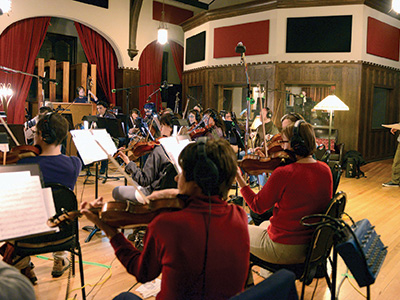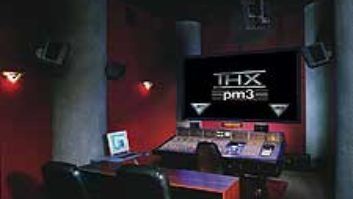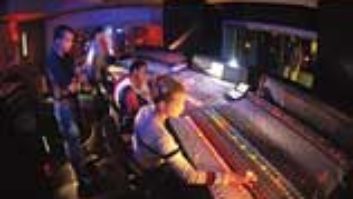
The staff of Steve Wilmans’ Echo Mountain Studios (Asheville, N.C.), which includes a beautiful restored church as well as a converted Salvation Army building, spearheaded and hosted more than a year’s worth of tracking and mixing work on the album Asheville Symphony Sessions. Designed to showcase the talents of local artists in western North Carolina, the project paired local bands with veteran arrangers and the Asheville Symphony to create new orchestral versions of the bands’ tunes.
The executive producers of this project were Echo Mountain studio manager Jessica Tomasin and producer Michael Selverne; the studio’s chief engineer, Julian Dreyer, handled all of the engineering for the bands and orchestra.
“Jessica Tomasin, Michael Selverne, and the symphony director, David Whitehill, threw a lot of names around and came up with a list of eight bands,” says Dreyer. “Then we scheduled one-day sessions for each one, for each band to record a single of one of their songs.”

Andy Herod (guitar) and Rodney Easter (bass) of the Electric Owls
The roots, rock and singer/songwriter acts who were chosen to appear on the album are Rising Appalachia, Doc Aquatic, Ben Lovett, Electric Owls, Free Planet Radio featuring Lizz Wright, Matt Townsend, Shannon Whitworth, and the Steep Canyon Rangers. Most everyone tracked a song live in the church, though Lovett pre-recorded some of his parts piecemeal in the personal studio he rents within Echo Mountain.
The single from each group was then sent to one of the arrangers who had agreed to participate, including Van Dyke Parks (Brian Wilson, Ry Cooder), Michael Bearden (Neil Young, Academy Awards), and Jonathan Sacks (Toy Story, Cars) as well as some local arrangers. “One of the arrangers, Chris Rosser, plays guitar, keys, and dotar in Free Planet Radio and plays in the symphony as well, so he did his own arrangement,” Dreyer explains. “And Ben Hovey, who is a local musician, did the arrangement for the Electric Owls track.
Once the orchestral arrangements came back, the symphony set up in the church studio. Dreyer employed a Decca Tree array using a Neumann U47 in the center and two KM56s at the sides; he also section-miked the musicians with the studio’s generous supply of ribbon microphones.
“We had two days of them playing over the parts that we had recorded already. And that is the first time we’d ever had such a large group,” says Dreyer. “There were varying sizes of ensembles, depending on the track, but the Michael Bearden and Van Dyke Parks ones were full—30 people. It’s a big room, but it gets real small real quick when you put in 30 people with their music stands and chairs.

“One of the really cool things was seeing local artists who might think this kind of thing would be out of their reach, and then all of a sudden they’re standing there listening to a symphony back their track.”
Studio manager Tomasin adds that after the album was completed, the music was then employed as the soundtrack to a documentary about a local Asheville philanthropist, Julian Price, whose contributions to the Asheville downtown community helped revitalize the city. “The film, The Julian Price Project, has been making the festival rounds, and we’ve already won a number of awards,” Tomasin says.
Visit mixonline.com to watch videos of the Asheville Symphony Sessions.



